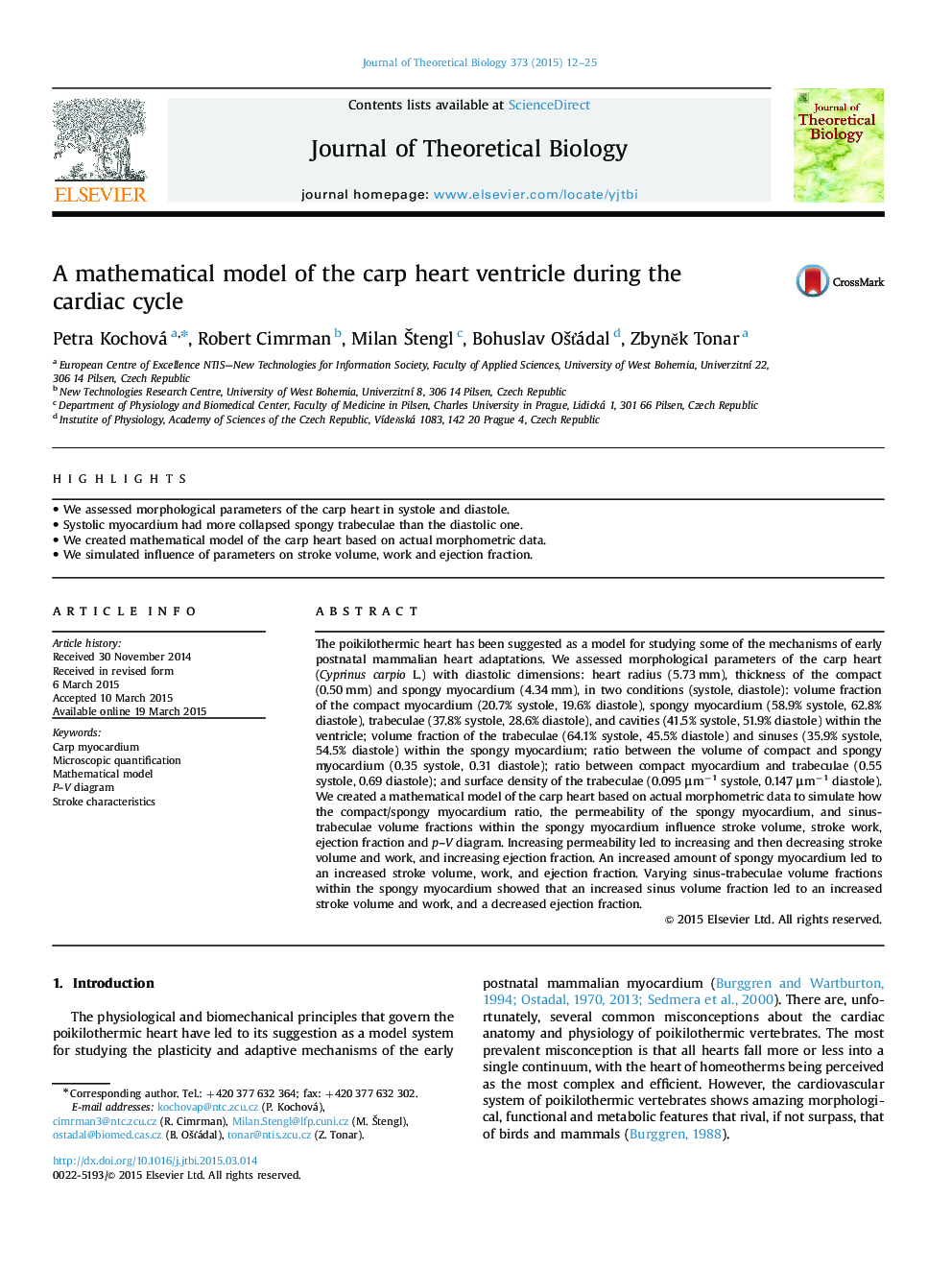| Article ID | Journal | Published Year | Pages | File Type |
|---|---|---|---|---|
| 6369884 | Journal of Theoretical Biology | 2015 | 14 Pages |
â¢We assessed morphological parameters of the carp heart in systole and diastole.â¢Systolic myocardium had more collapsed spongy trabeculae than the diastolic one.â¢We created mathematical model of the carp heart based on actual morphometric data.â¢We simulated influence of parameters on stroke volume, work and ejection fraction.
The poikilothermic heart has been suggested as a model for studying some of the mechanisms of early postnatal mammalian heart adaptations. We assessed morphological parameters of the carp heart (Cyprinus carpio L.) with diastolic dimensions: heart radius (5.73 mm), thickness of the compact (0.50 mm) and spongy myocardium (4.34 mm), in two conditions (systole, diastole): volume fraction of the compact myocardium (20.7% systole, 19.6% diastole), spongy myocardium (58.9% systole, 62.8% diastole), trabeculae (37.8% systole, 28.6% diastole), and cavities (41.5% systole, 51.9% diastole) within the ventricle; volume fraction of the trabeculae (64.1% systole, 45.5% diastole) and sinuses (35.9% systole, 54.5% diastole) within the spongy myocardium; ratio between the volume of compact and spongy myocardium (0.35 systole, 0.31 diastole); ratio between compact myocardium and trabeculae (0.55 systole, 0.69 diastole); and surface density of the trabeculae (0.095 μmâ1 systole, 0.147 μmâ1 diastole). We created a mathematical model of the carp heart based on actual morphometric data to simulate how the compact/spongy myocardium ratio, the permeability of the spongy myocardium, and sinus-trabeculae volume fractions within the spongy myocardium influence stroke volume, stroke work, ejection fraction and p-V diagram. Increasing permeability led to increasing and then decreasing stroke volume and work, and increasing ejection fraction. An increased amount of spongy myocardium led to an increased stroke volume, work, and ejection fraction. Varying sinus-trabeculae volume fractions within the spongy myocardium showed that an increased sinus volume fraction led to an increased stroke volume and work, and a decreased ejection fraction.
